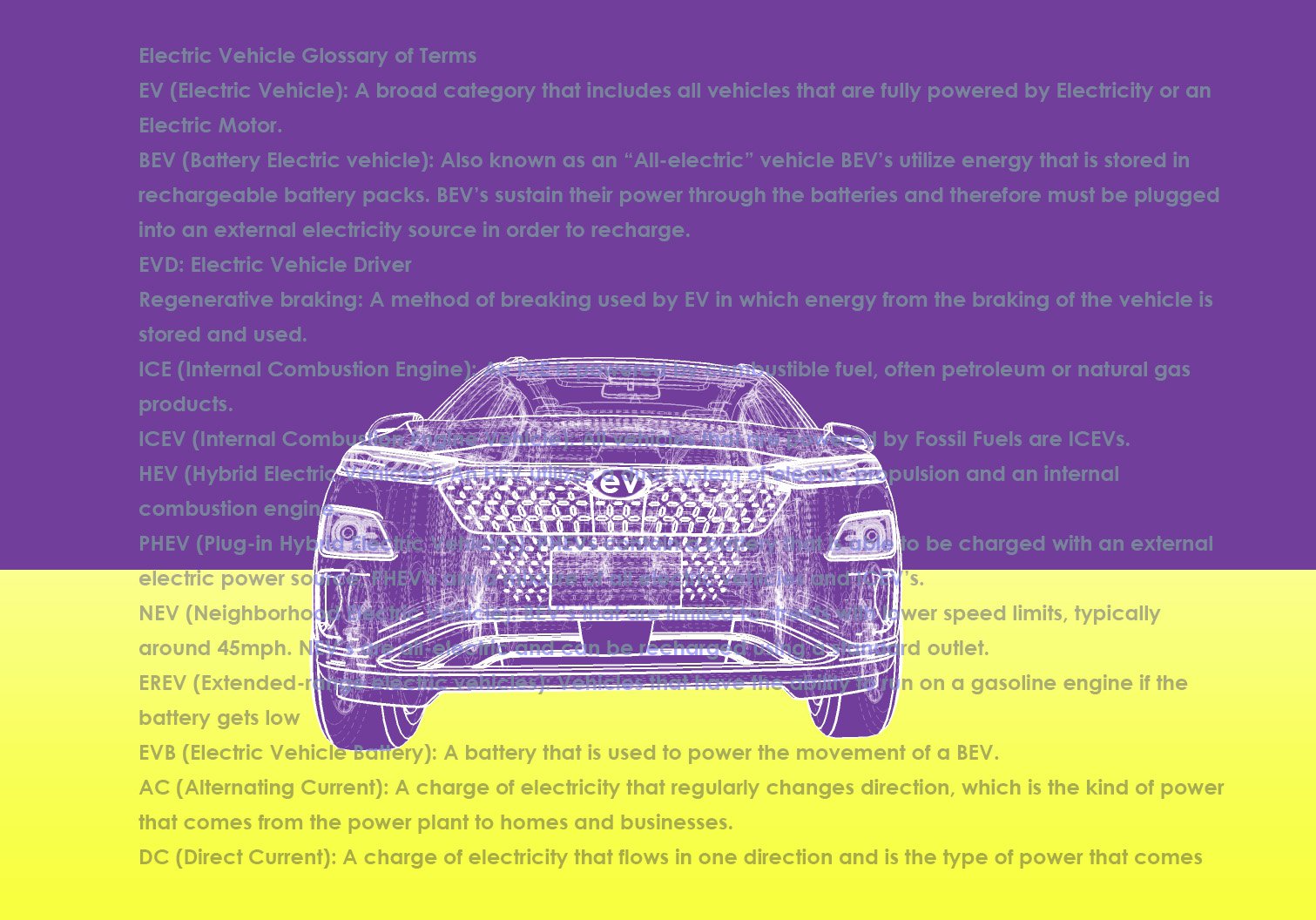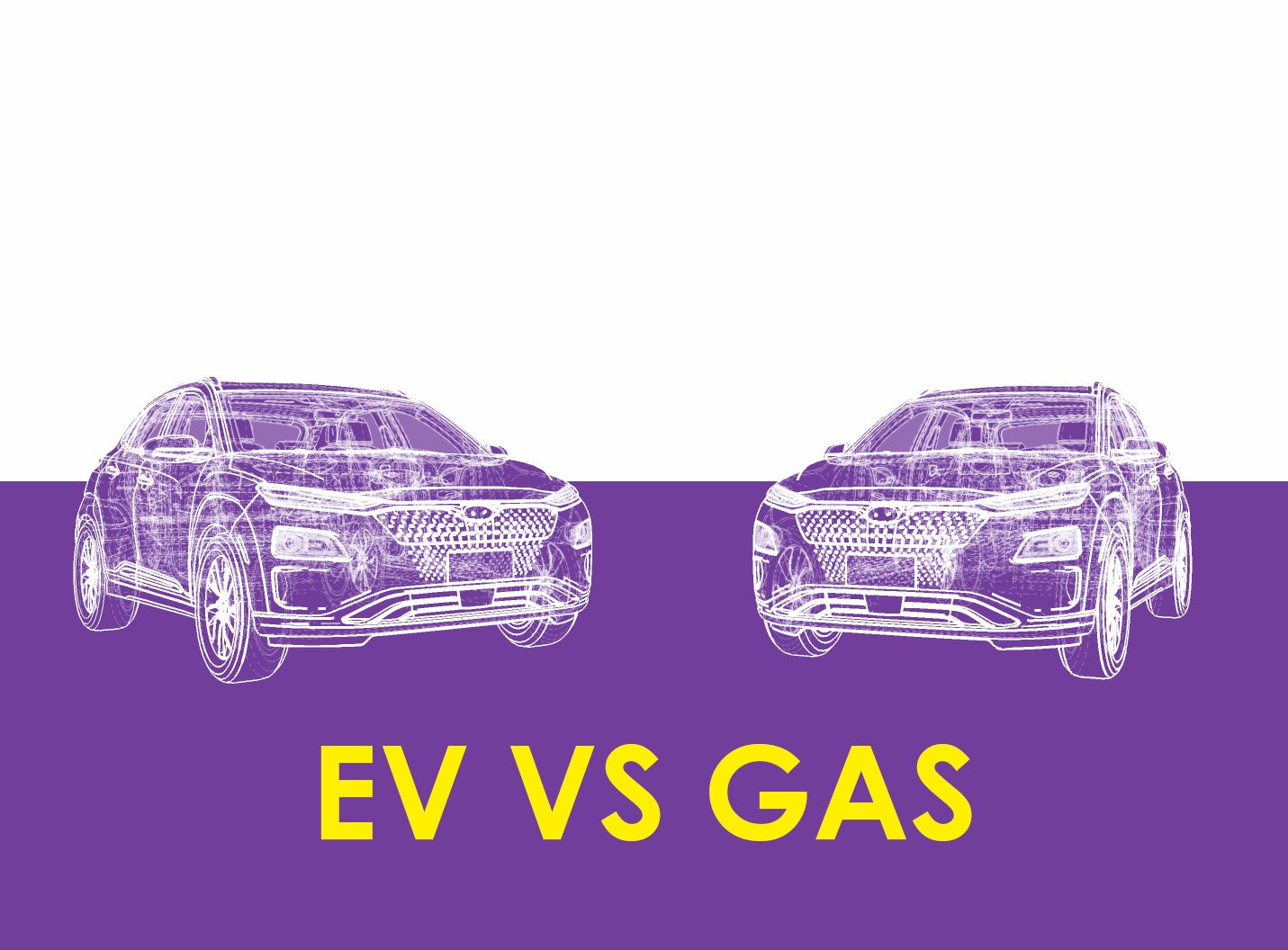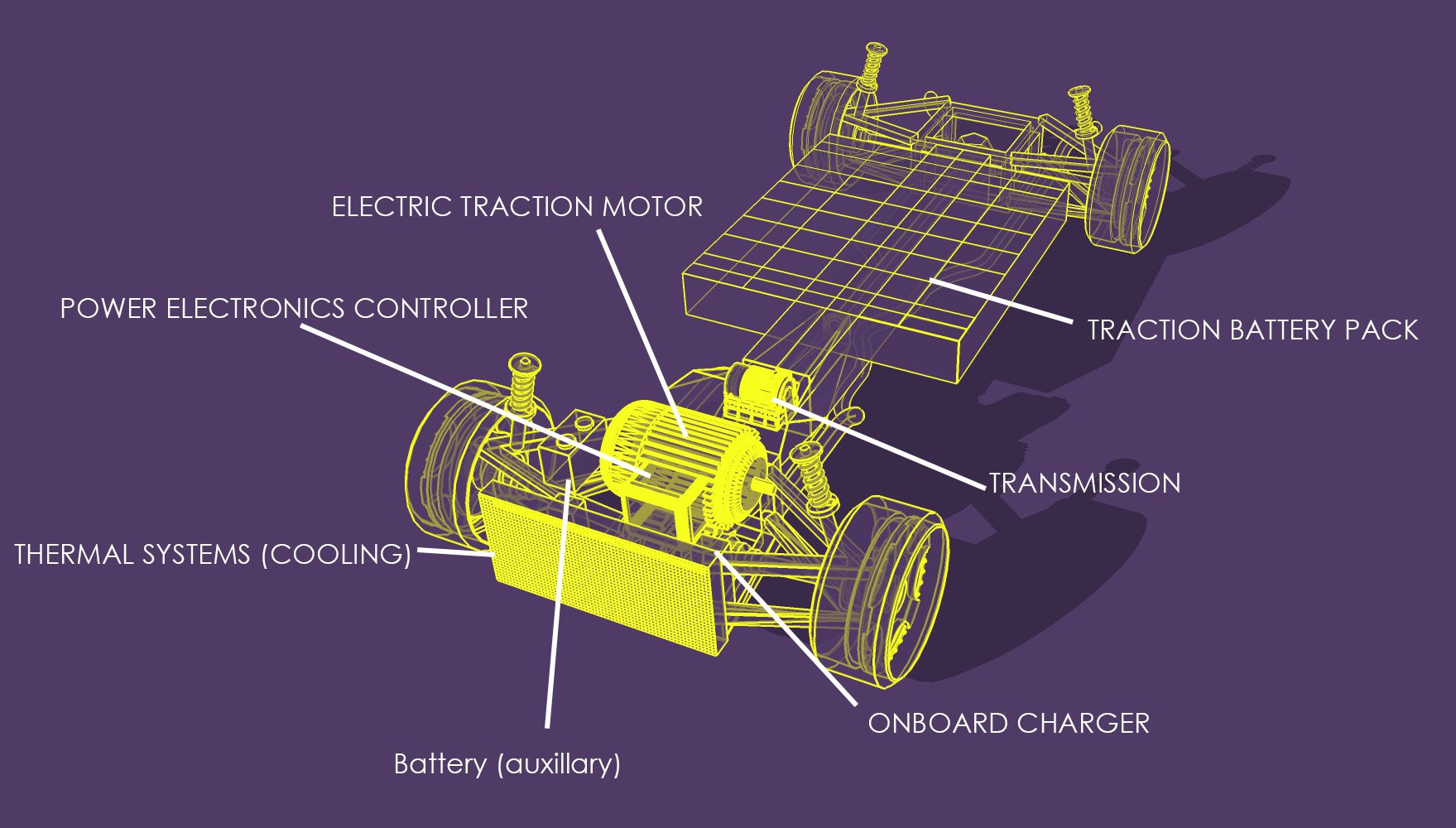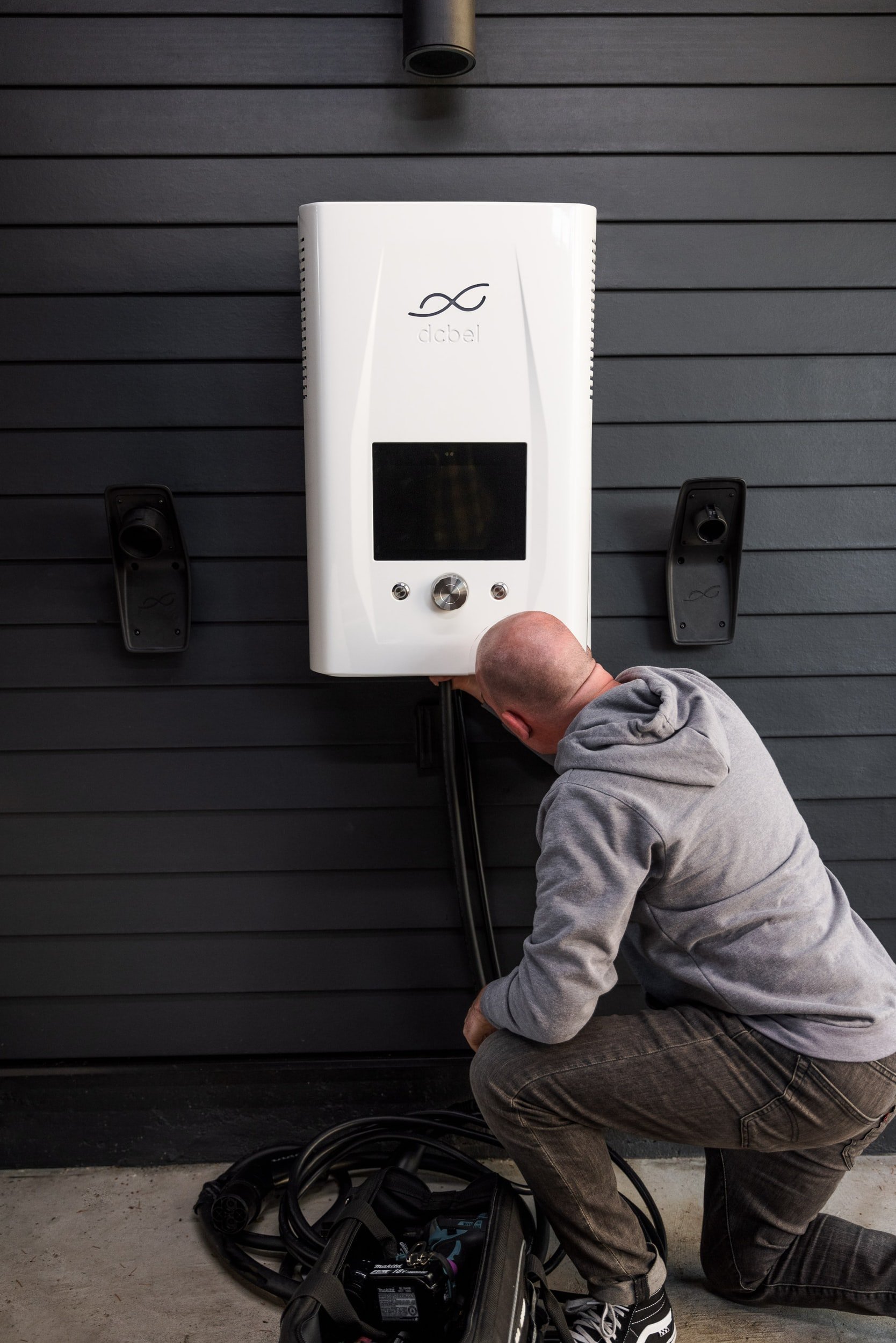HOW DO EVS WORK?
WHY DRIVE AN EV?
EV GLOSSARY OF TERMS
THINGS TO CONSIDER
CHARGING BASICS
Solar powered EV charging
EV INCENTIVES AND Programs
EVS AND FUEL ECONOMY
Unlike your typical gas-powered vehicle, electric vehicles (or EVs) do not use a combustion engine to drive. EVs contain an electric motor and large traction battery pack. The vehicle pulls energy from a charging station or electrical grid (either public or in your home) and then stores that energy in its battery. Once the battery is charged, it powers the motor, which works together with other electrical components to make the vehicle move. EVs travel along the road without burning gasoline or producing exhaust emissions from the tailpipe.
HOW DO EVS WORK?
EV COMPONENTS
Traction battery pack: This is also called the Electric Vehicle battery. This battery acts as an electrical storage system. Once charged, it powers the electric vehicle.
DC/DC converter: This device converts higher-voltage DC power from the traction battery pack to the appropriate lower-voltage DC power that is necessary to recharge the auxiliary battery.
Electric Traction Motor: This is the main component of an EV that differentiates it from a combustion engine vehicle. The motor converts electrical energy into kinetic energy which then moves the vehicle's wheels.
Charge Port: The charge port allows the vehicle to connect to an external power supply in order to charge the battery.
Onboard Charger: Used to convert the AC electricity received by the charge port to DC power for charging the traction battery.
Power Electronics Controller: This unit regulates the flow of electrical energy from the traction battery to the electric motor.
Battery ( auxiliary): Auxiliary batteries are the source of electrical energy for the accessories in electric vehicles.
Thermal system (cooling): This system is responsible for maintaining an operating temperature for the main components of an electric vehicle such as: engine, electric motor and other electronics in the vehicle.
Transmission (electric): The transmission adjusts the power sent to the driveshaft, axles, and wheels.
Why Drive An EV?
A typical passenger vehicle emits about 4.6 metric tons of carbon dioxide per year. This number can vary based on a vehicle’s fuel, fuel economy, and the number of miles driven per year. In addition to carbon dioxide (CO2), automobiles produce methane (CH4)and nitrous oxide (N2O) from the tailpipe and hydrofluorocarbon emissions from leaking air conditioners. The emissions of these gases are small in comparison to CO2; however, the impact of these emissions can be important because they have a higher global warming potential (GWP) than CO2. Cars are the single biggest source of air pollution in the United States and a major contributor to climate change. The federal government estimates that cars, trucks, and other light-duty vehicles account for a third of all greenhouse gas emissions in this country. That’s more than any other single source, including power plants and factories.
EVs produce zero emissions directly, however, emissions are created during both the production and distribution of the electricity used to fuel the vehicle. This source of emissions can be mitigated through the continued adoption of zero emissions renewable power generation like Wind and Solar. Aspower generation and battery technologies improve EVs will become the preferable choice for transportation in the 21st century.
2019 San Antonio Community Greenhouse Gas Emissions by Sector
2020 National Greenhouse Gas Emissions by Sector
Note: All emission estimates from the Inventory of U.S. Greenhouse Gas Emissions and Sinks: 1990–2020.
The following EV basic definitions will talk about some of the main components & levels of preparedness to make your home or building ready for electric vehicles.
-
An electric vehicle or EV is a vehicle powered by an electric motor and a battery that is charged through an Electrical Vehicle Supply Equipment (EVSE) commonly referred as an EV charger.
-
A PHEV is a vehicle that has a combination of a combustion engine paired with an electric motor. The PHEV uses a battery that can be charged with a Level 1 charger. The EV driving range of a PHEV will depend on the model of the vehicle but typically hybrid vehicles have between 20-40 mile range. For example a PHEV-20 has a traveling range of 20 miles before it uses its combustion engine.
-
An EV charger is the equipment that connects the EV to a building’s electrical service and charges your vehicle’s battery.
-
EV capable means that a home or building’s electrical load and main electrical panel have been designed to have sufficient capacity & space for a future EV load.
-
EV Ready means your home or building has the required electrical load and electrical hardware for a future EV charger.
-
A home or building that that features a fully installed electrical vehicle charger.
EVs have several advantages over conventional vehicles:
Energy efficient. EVs convert over 77% of the electrical energy from the grid to power at the wheels. Conventional gasoline vehicles only convert about 12%–30% of the energy stored in gasoline to power at the wheels.
Environmentally friendly. EVs emit no tailpipe pollutants, although the power plant producing the electricity may emit them. Electricity from nuclear, hydro, solar, or wind-powered plants causes no air pollutants.
Performance benefits. Electric motors provide quiet, smooth operation and stronger acceleration and require less maintenance than internal combustion engines (ICEs).
Reduced energy dependence. Electricity is a domestic energy source.
THINGS TO CONSIDER:
EVs have some drawbacks compared to gasoline vehicles:
Driving range. EVs have a shorter driving range than most conventional vehicles—although EV driving ranges are improving. Most EVs can travel more than 100 miles on a charge, and some can travel in excess of 200 or 300 miles depending on the model.
Recharge time. Fully recharging the battery pack can take 3 to 12 hours. Even a "fast charge" to 80% capacity can take 30 min.
Batteries for EVs are designed for extended life, and a study by DOE's National Renewable Energy Laboratory suggest these batteries may last 12 to 15 years in moderate climates and 8 to 12 years in severe climates. However, these batteries are expensive, and replacing them may be costly if they fail.
Charging basics
There is a broad selection of EV chargers in the market with different charging capacities designed for different charging needs. If you have already purchased your first EV it is most likely that the car manufacturer provided you with information on what EV charger is best compatible with your vehicle.
If this is the case, you can find helpful information on how to prepare your home for your new EV in our Connect page.
If you are currently in the process of selecting an EV and would like to learn more about EV Chargers here you will learn about the different EV charger types, EV charging levels, and the features of each.
There are 3 different power levels to charge an EV which change how long it takes to recharge your vehicle.
Level 1
Charging time is 6-14 hours
Plug in to a traditional 120 V AC plug
Best for plug-in hybrid vehicles
Level 2
Charging Time 3-6 hours
Provide charging through a 240 V AC plug and dedicated circuit
Best for fully electric vehicles
Level 3
Charging Time 30 min - 1 hour
DC Fast Charging ranges from 200 to 800 VDC
Most common in Public chargers
Plug cONNECTOR Types
Connector:
Port J1772
Level: 2
Compatibility: 100% of electric cars
Tesla: With adapter
Connector:
CHAdeMO
Level: 3
Compatibility: Check specifications of your EV
Tesla: With adapter
Connector:
SAE Combo CCS
Level: 3
Compatibility: Check specifications of your EV
Tesla: No
Connector:
Tesla HPWC
Level: 2
Compatibility: Only Tesla
Tesla: Yes
WALL Plug Types
Wall Plug:
Nema 515, Nema 520
Level: 1
Compatibility: 100% of electric cars, Charger is required
Wall Plug:
Nema 1450 (RV plug)
Level: 2
Compatibility: 100% of electric cars, Charger is required
Wall Plug:
Nema 6-50
Level: 2
Compatibility: 100% of electric cars, Charger is required
Find an ENERGY STAR certified EV Charger Here
When selecting your EV charger consider installing a certified ENERGY STAR EV charger, these chargers are designed to use 40% less energy on stand-by mode than non-certified products.
ENERGY STAR certified EV chargers provide the same functionality as other chargers and are tested to rigorous safety standards.

HOW TO SET UP A SOLAR-POWERED CAR CHARGING STATION FOR YOUR HOME.
You have learned about the benefits of owning an Electric Vehicle such as reduced emissions in the air, less reliance on fossil fuels, and long-term transportation cost & operating savings. However, having an EV will increase the electrical demand of a home. A great option to offset the energy demand of EV charging is to install a solar PV system in your home. Additionally, your solar PV system can be paired with a back-up battery for off peak-hours charging. Look at our Connect page to find out how to determine your future energy demand and how to size your solar PV system.
EV INCENTIVES
There are great economic and environmental incentives to owning an EV. Here are some incentives you can take advantage of in San Antonio.
Local:
With paid parking, you can charge your electric vehicle for free in the short-term and long-term parking lots at the San Antonio International Airport.
Vehicles displaying an authorized Vehicle Placard can park for FREE at City of San Antonio managed downtown street parking meters or street pay stations for a period of time not to exceed the limit of the meter or pay station. To find out more information and download the application, please visit the Center City Development's Parking Division.
Federal:
A federal income tax credit up to $7,500 is available for the purchase of a qualifying EV through the Electric Vehicle Federal Tax Credit.
The Inflation Reduction Act of 2022 (Public Law 117-169) amended the Qualified Plug-in Electric Drive Motor Vehicle Credit (IRC 30D), now known as the Clean Vehicle Credit, and added a new requirement for final assembly in North America that took effect on August 17, 2022, with additional requirements taking place beginning January 1, 2023. More details are provided below by date and on the list of EVs with Final Assembly in North America.
The Light-Duty Motor Vehicle Purchase or Lease Incentive Program provides rebate incentives statewide to persons who purchase or lease an eligible new light-duty motor vehicle powered by compressed natural gas (CNG), liquefied petroleum gas (LPG), or hydrogen fuel cell or other electric drive (plug-in or plug-in hybrid).
Consumers who purchase qualified residential fueling equipment prior to December 31, 2020, may receive a tax credit of 30% of the cost, up to $1,000 by taking advantage of the Alternative Fuel Vehicle Refueling Property Credit.
You may be eligible for the Plug-in Electric Drive Vehicle Credit.
For more information on local EV incentives, visit CPS Energy’s Electric Vehicles Page.
Know yOUR AVG FUEL COSTS BEFORE YOU BUY
EVs much like traditional Gasoline powered vehicles all have different ranges and fuel efficiencies. Learn which vehicles are the most efficient by clicking below:















